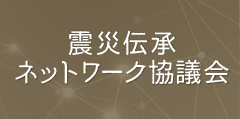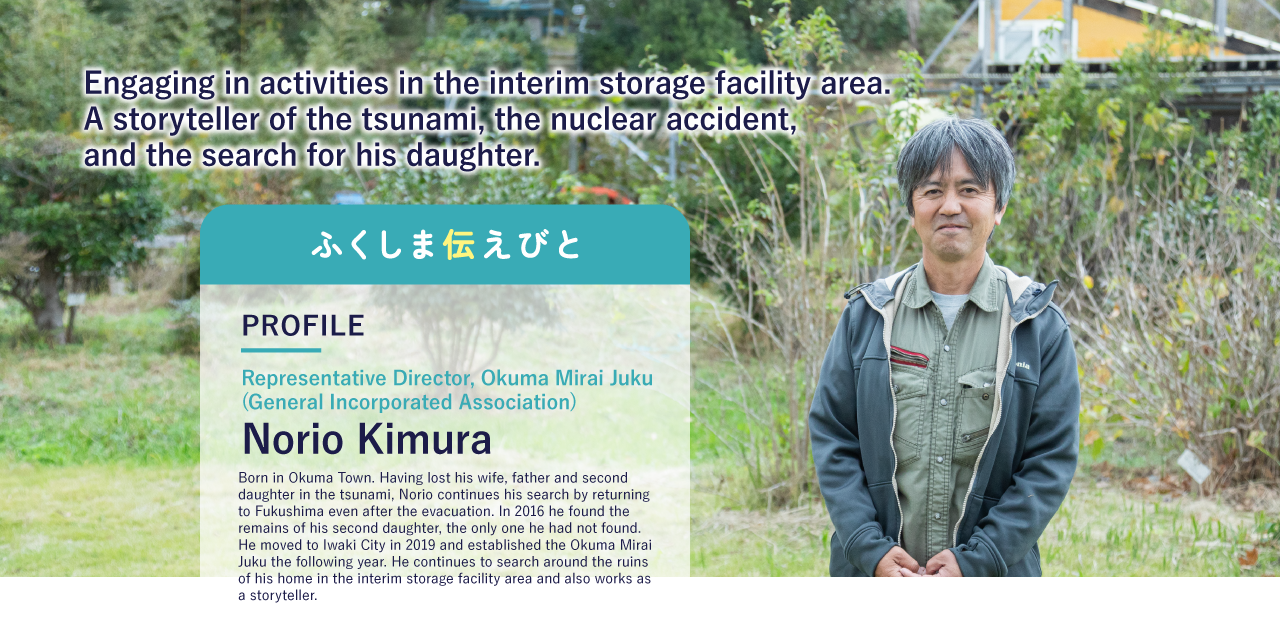
More than 12-year search for second daughter lost in tsunami.
The discovery of the remains raises new questions.
Norio, who lost three family members in the earthquake, is also an avid storyteller in the area of an interim storage facility for contaminated soil and other materials. While searching for the remains of his second daughter around the ruins of his home in the area, he has been telling stories about the search, the current situation in the area, and lessons learned about disaster preparedness. He was at work at the time of the earthquake, heard about the reports on the radio, and continued working, thinking that his home would be safe if the tsunami was 3 meters high. However, when he returned home, his house was swept away, and although his mother and eldest daughter were in a shelter, his wife, father, and second daughter were missing. He searched the area, but because of the nuclear accident, he decided to give up the search and evacuate his mother and eldest daughter. However, he continued to search for them, going to Fukushima even from where he had evacuated. In April, his wife and father were found one after another. Then in September 2016, his second daughter, Yuna, was found. Her neck bone remained on a muffler found in a pile of rubble, and this discovery raised new questions for Norio. He was relieved, but at the same time struggled: "She may not have died from the tsunami, but from being left behind.”
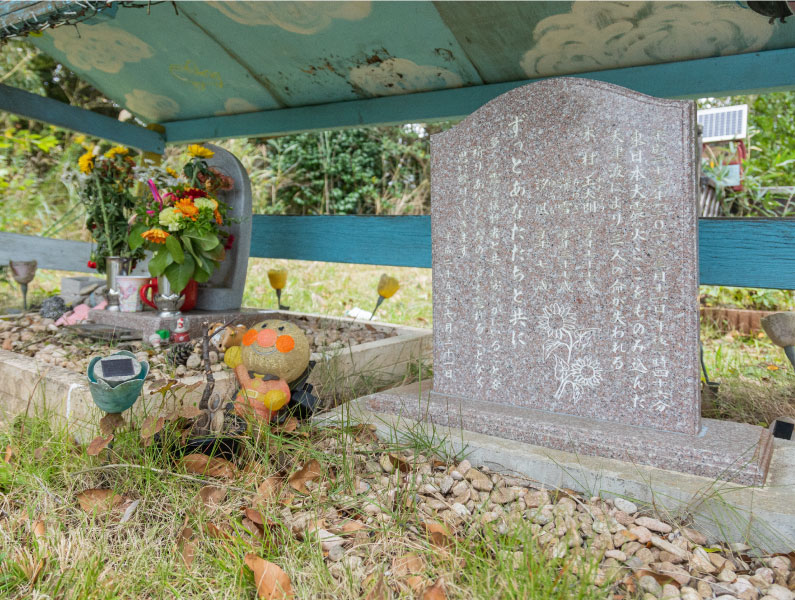
A stone monument erected in July 2013 on the hill behind Norio’s home. One of his storytelling activities is to stand in front of the monument and talk about the search and how he erected the monument on his own.
Shares his own experience as a lesson for disaster prevention,
valuing what can only be felt at the site of a disaster.
Norio had to give up the search immediately after the earthquake because of the nuclear accident. However, he does not express anger over the accident, but rather tries to confront the issue, taking into account the risks involved in living with electricity. During his storytelling activities, he has not expressed any personal feelings, but has conveyed his wish that people reconsider their lives with electricity, which has caused the damage. He also points out that listening to stories at the site of a tsunami or nuclear accident "is not the same as looking at the documents and remains laid out in a facility." He said, "There is a feeling that can only be experienced locally," and emphasized that this is what he values in his activities. In addition to sharing his experience, Norio also tries to share lessons on how to prevent damage. After the earthquake, some media reported about the 869 Jogan earthquake, but he regrets that "if I had known about it before the earthquake, I would have told my daughter about it and taught her how to escape from the tsunami.” Yuna and the others might have been saved if they had known. For this reason, Norio looks ahead to the future, saying, "I want to pass on this lesson for the next 1,000 years.”
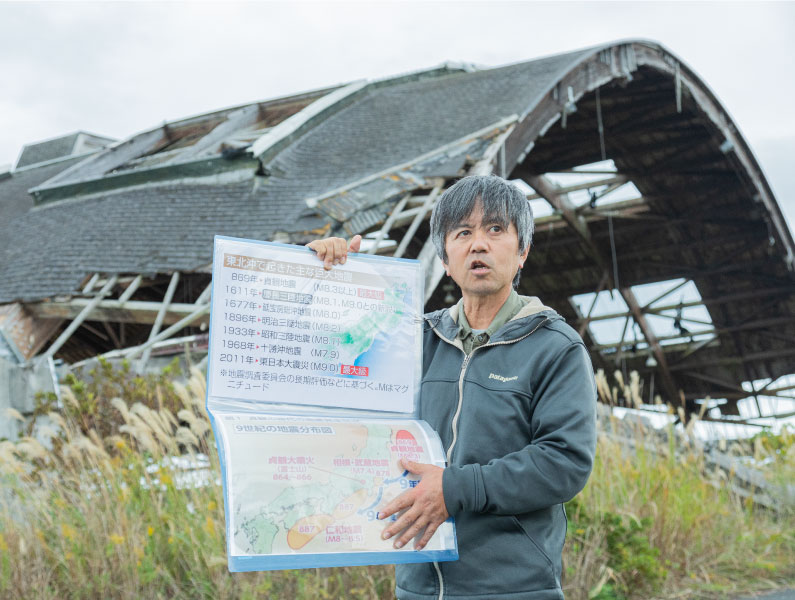
Norio talking about the major earthquake in Tohoku at the Cultivation Fishery Center in the area. He continues his activities, taking care not to exceed the annual radiation exposure.
The goal is not to find all the remains,
but to preserve the land damaged by the earthquake for the future.
Norio's search for Yuna's remains is ongoing at the same time as his storytelling activities. By 2023, only about 20% of the remains have been found, but "these days, the goal is no longer to find all the remains," he said. His current goal is to preserve this land as an "archive field" for the future. One reason for preserving the land is to continue searching for remains in the interim storage facility area, but above all, the main purpose is to convey to the next generation the magnitude of the damage caused by the earthquake and the importance of disaster prevention. Norio says it was Yuna who made him realize the importance of preserving the land and passing it on. For this reason he is the only one in the area who has not sold or leased any land. Since the area was severely damaged by the earthquake and tsunami, he strongly stated, "We must pass it on to the future like Hiroshima, Nagasaki, and Okinawa, to prevent such damage from happening again.” Although each municipality has built memorial facilities, Norio shared his idea of establishing such facilities on a larger scale, and spoke of his great goal of passing on the lessons of the disaster to the future.
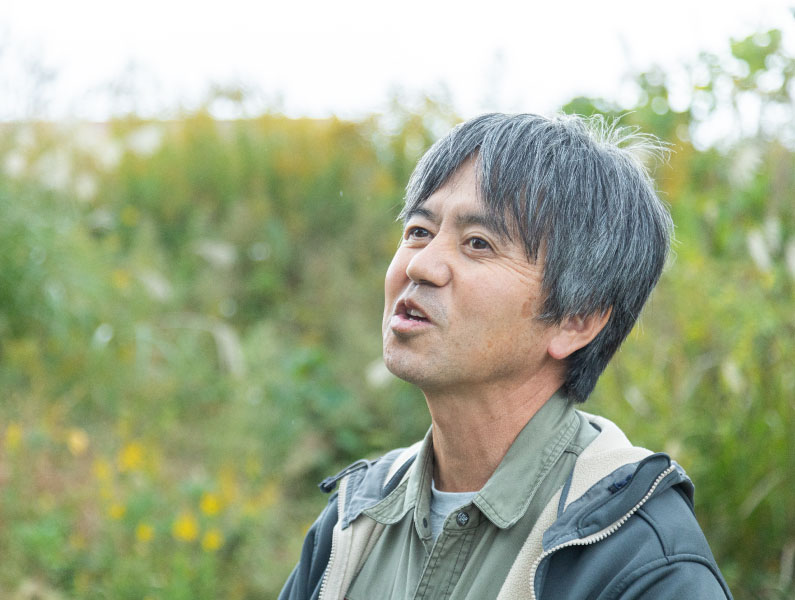
Norio showed the way to the hollow where Yuna's femur was found. “She was a girl with a lot of friends," he said calmly, sharing his memories.
Okuma Mirai Juku (General Incorporated Association)
〒979-1303
80 Kumagawa, Kumagawa Aza, Oaza, Okuma-machi, Futaba-gun, Fukushima
〒979-0331
48-1, Suetsugi Aza Dai, Hisanohama, Iwaki-shi, Fukushima
TEL:080-6006-4811
HP:https://onl.la/hrPXWSy
MAIL:team.yuusyou@gmail.com


